Whether you’re an avid baker or just starting out, learning how to soften butter quickly is sure to up your baking game! Nearly half of all baked goods call for room-temperature butter, but sometimes you just forget to leave it out to soften or maybe you just don’t have the time. Well, worry no more! I’m sharing some baking tips and my 6 favorite ways to quickly soften butter!

Jump to:
- What is room-temperature softened butter exactly
- Why use softened butter in baking
- How long does it take butter to soften at room temperature
- Soften butter quickly without melting it? - 6 ways
- 1. Cut it into cubes
- 2. Grate the butter
- 3. Pound the butter
- 4. Cover it with a warm bowl
- 5. Put it in a humid microwave
- 6. Microwave it
- Can You leave the butter out overnight to soften?
- Expert tips for softening butter
- Softening butter FAQs
- Recipes using softened butter
- More Baking Guides
- How to soften butter quickly
What is room-temperature softened butter exactly
It may surprise you to learn that when recipes state that butter should be softened to room temperature this refers to a semi-solid stage in which the butter is extremely spreadable but still holds its shape. So it should actually still be a little cool to the touch, not melted at all, or overly mush.
Generally, room temperature softened butter should be between 18°-20°C / 65°-68°F. This means that - similar to softened cream cheese - when you press it with your finger it should make a slight indentation, but your finger should not sink into the butter.
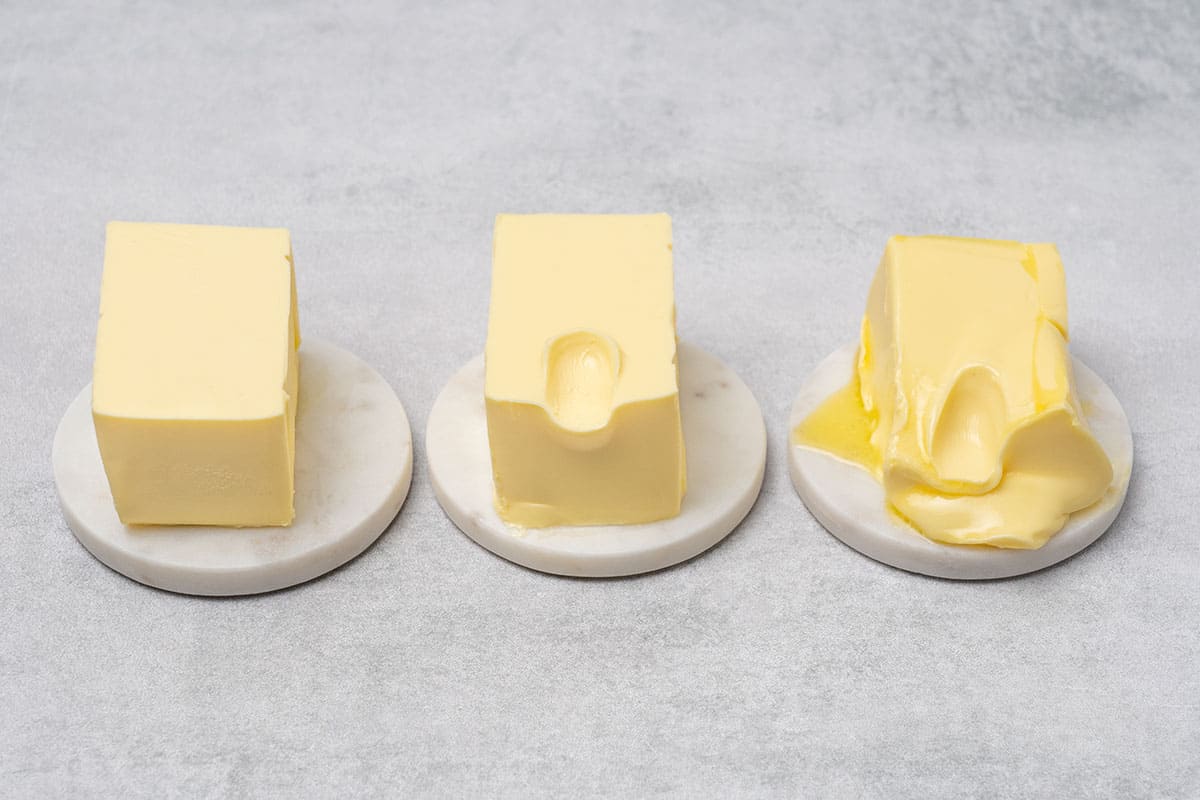
Why use softened butter in baking
Softened butter is the most common form of butter used in baking and there are a couple of good reasons for this based on the science of baking. Firstly, because butter is a solid fat, when it’s whisked at a high speed it forms air pockets, which helps baked goods to rise in the oven and turn out really fluffy. This happens even more so when butter is correctly creamed together with sugar.
And secondly, room temperature butter is able to emulsify together with the other ingredients much more easily, which creates batters and doughs that are smooth with a uniform texture.
Butter that is too warm doesn’t aerate or emulsify properly, which will also result in heavy dense baked goods. So always try to remember that softened butter does not mean melted butter.
On the other end of the scale, it’s not possible to whip or cream cold butter. So unless you’re making pie crust, that requires cold butter chunks, most baking recipes that call for room-temperature butter will not turn out quite right with cold butter.
Inappropriate butter temperature (too cold or too warm) would result in outcomes like lumpy nutella frosting, oily pecan chocolate chip cookies, and dense marble loaf cake.
How long does it take butter to soften at room temperature
So before we really start digging into how to soften butter quickly for baking, let’s first talk about the most foolproof and old-fashioned way. How do you soften butter at room temperature? You simply just set it on your kitchen counter a few hours before you want to start baking.
But how long does it take to bring butter to room temp? In most cases, if you set a cold stick of store-bought or homemade butter on your kitchen counter it will take about an hour to soften to room temperature. But frozen butter is going to take at least 2 hours or more. However, how long it takes is also dependent on the temperature of your kitchen. If it’s a warm day the butter could take just 30 minutes to come to room temperature. Yet, on a cold winter day, it could take double the amount of time.
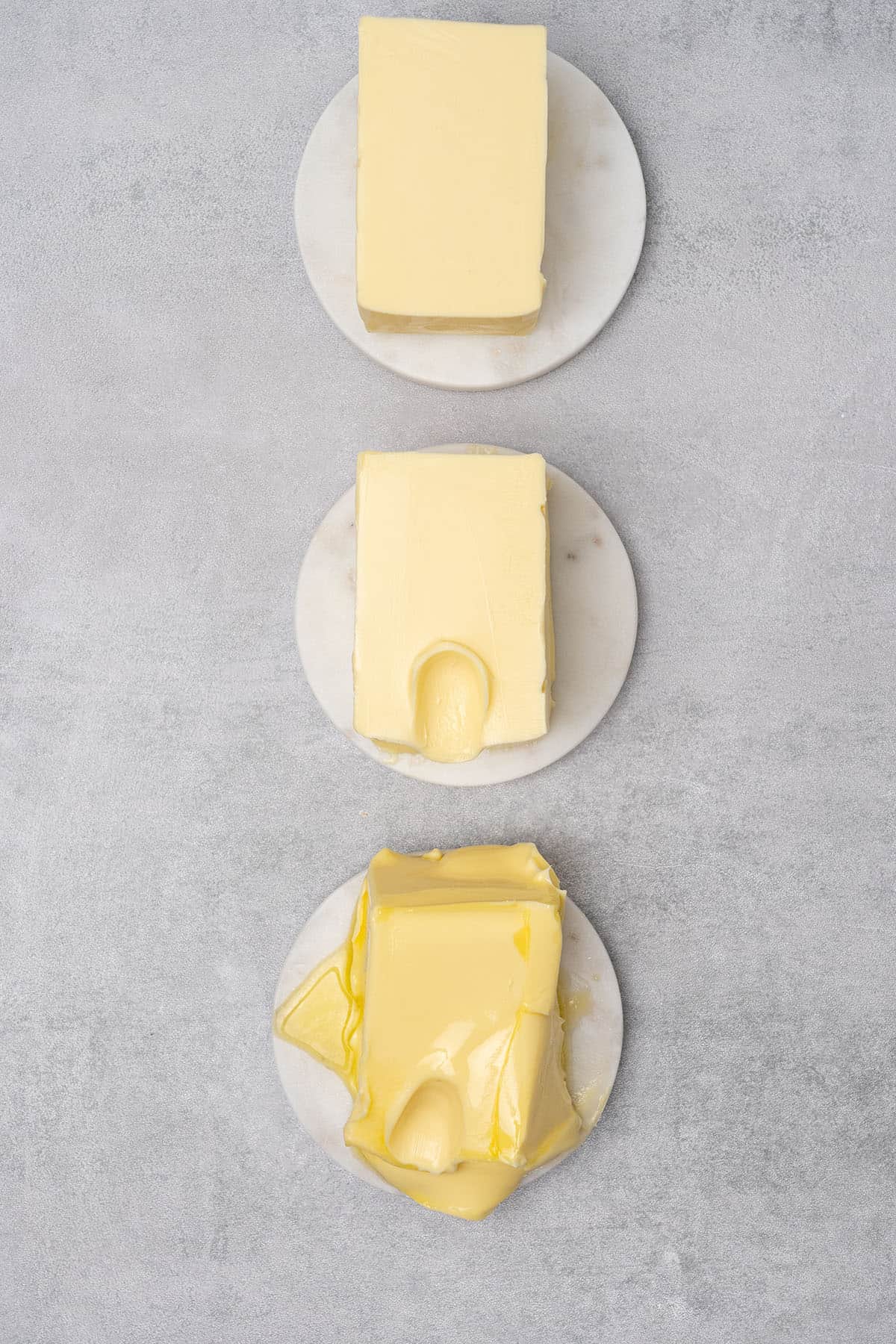
Soften butter quickly without melting it? - 6 ways
If you forgot to take your stick butter out of the fridge to soften before starting a recipe or just decided to whip some delicious mini blueberry muffins together in a pinch you no longer have to google, how can I soften butter to room temperature quickly?
I’m going to share 6 different ways of how to bring butter to room temperature quickly as well as the pros and cons of each method. Including how to soften butter in the microwave!
1. Cut it into cubes
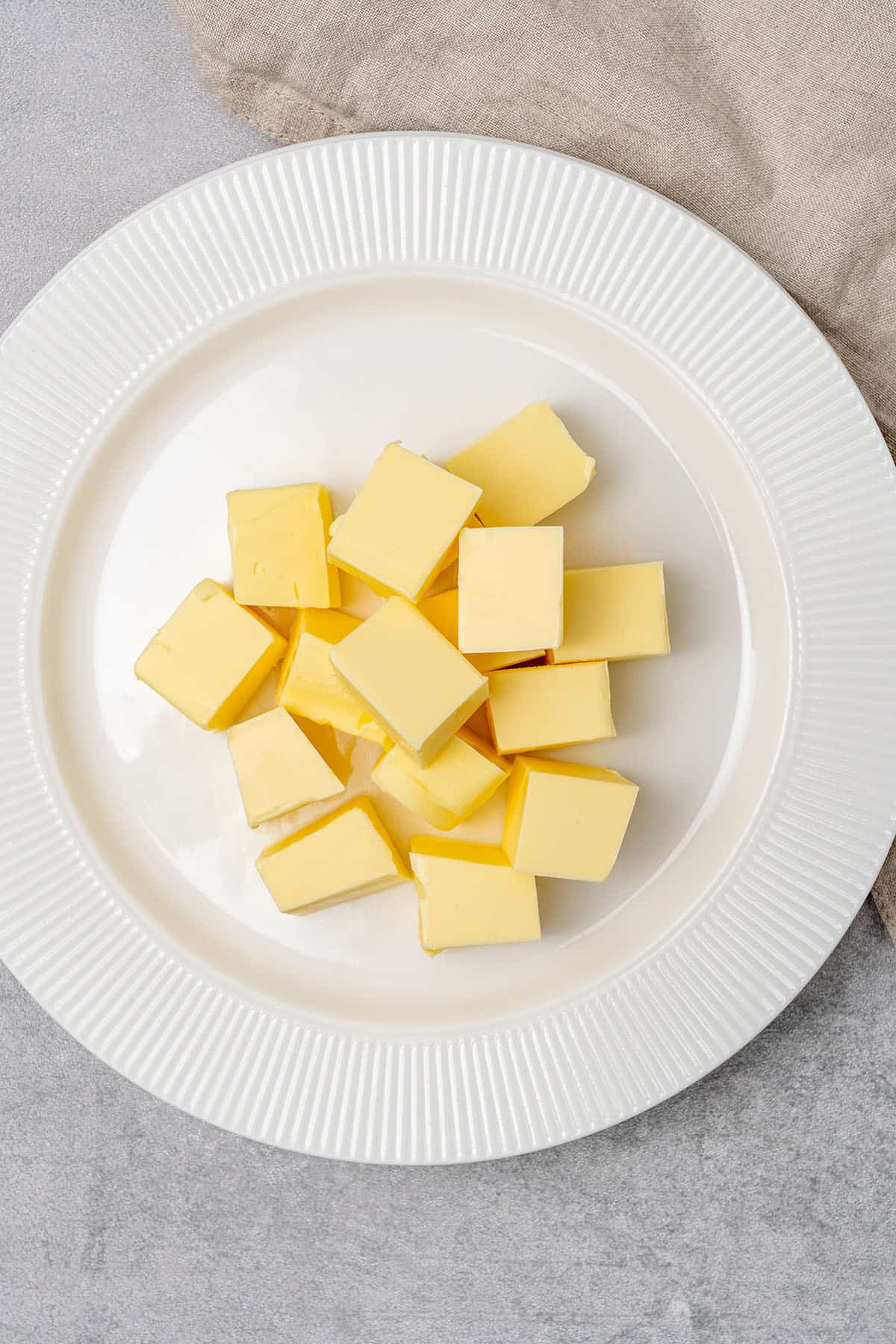
Butter cut into chunks will come to room temperature much quicker than a cold whole stick of butter. This is an ideal way how to soften butter without a microwave.
- How to: Simply cut the cold stick of butter into cubes and put it on a plate. Keep in mind that smaller cubes will soften faster than bigger chunks.
- Time: 15 minutes
- Pros: Simple way to soften butter that requires no special equipment and shaves off about 45 minutes of waiting time.
- Cons: This method takes a bit longer.
2. Grate the butter

Dramatically speed up the softening process by using a box grater to grate the butter. This method works by increasing the surface area of the butter.
- How to: Use a basic box grater to shred a stick of cold butter onto a plate just like you would a block of cheese. Then let it sit for a bit to soften.
- Time: 5 to 7 minutes
- Pros: No microwave or fancy equipment is needed. This is an easy way to speed up the softening process without the risk of accidentally melting the butter.
- Cons: Some recipes ask that the room temperature butter be in the form of a whole stick or cubed. So this method won’t work for all recipes. You will also lose some butter on the grater so it is not the most economical solution.
3. Pound the butter
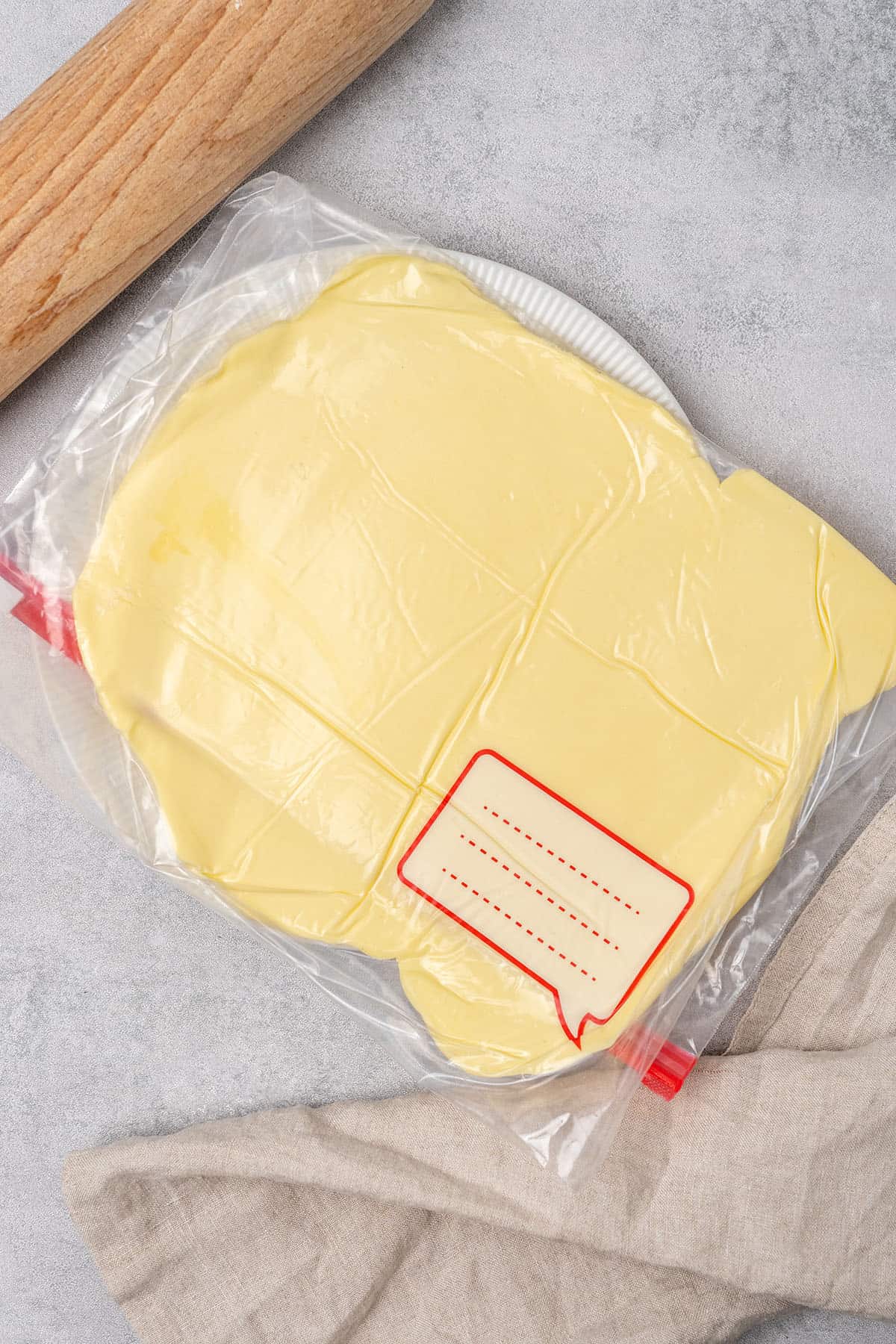
Just like grating cold butter, flattening it with a rolling pin increases the surface area, which speeds up the softening time.
- How to: Put the cold butter into a plastic ziplock bag or between 2 pieces of parchment paper. Next, flatten the butter by either beating it or rolling back and forth over it with a rolling pin. You can also use a meat mallet to pound it if you prefer. Then let the butter sit for about 5 to 10 minutes to soften. Note, the thinner you flatten the butter the quicker it will come to room temperature.
- Time: 5 to 10 minutes
- Pros: The butter becomes soft fairly quickly and it’s a no-fuss way to soften butter without a microwave.
- Cons: This way takes a little bit of elbow grease and more effort. You also need to use a tool. Also, it is kind of difficult to remove the butter from the ziplock bag and you will lose a lot of the butter that sticks to the bag, so it is not my favorite method.
4. Cover it with a warm bowl
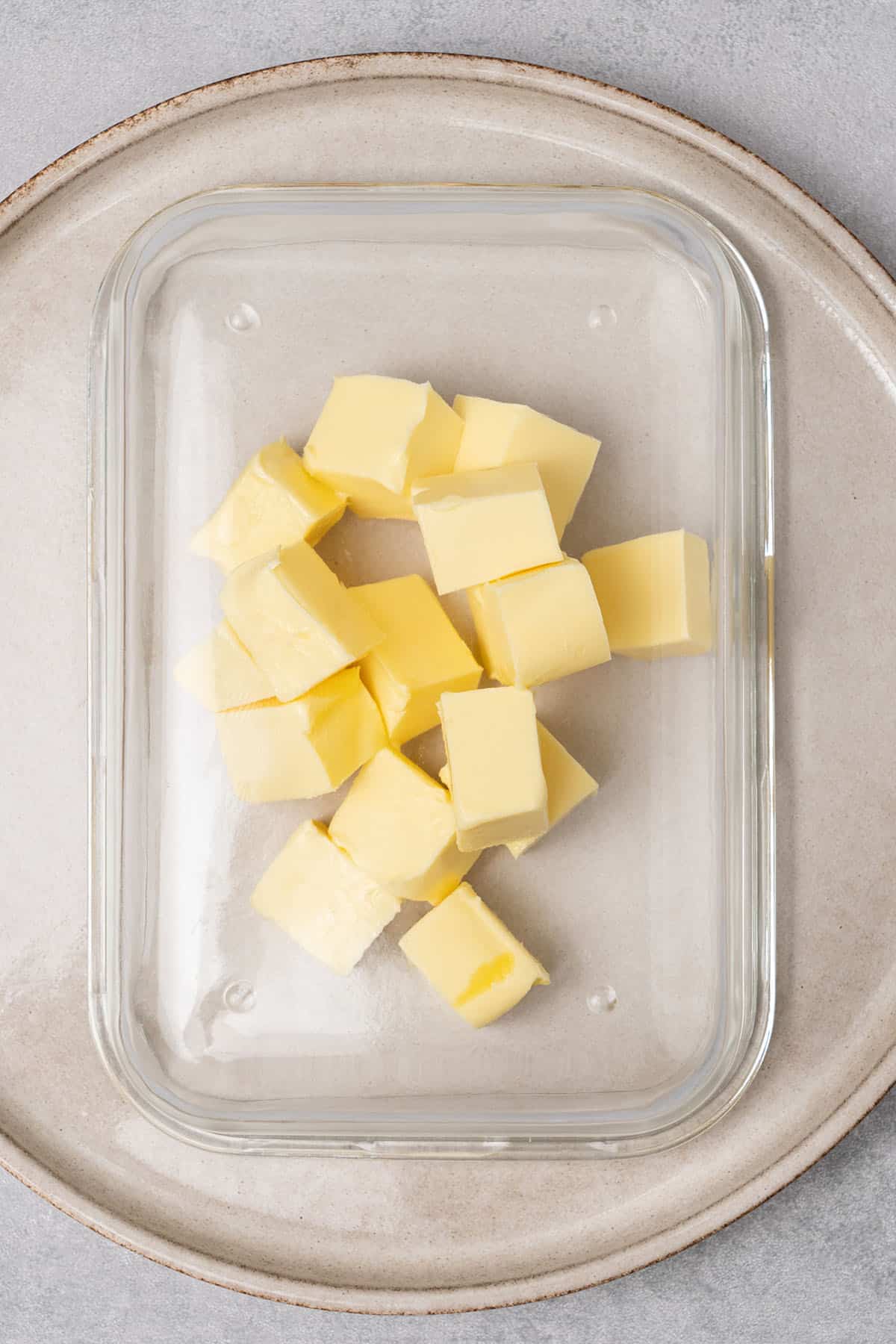
The best way to soften the butter quickly without microwave is by covering it with a warm bowl. The radiating heat warms the cold butter up just enough for it to reach room temperature in just a matter of minutes.
- How to: First, cube the cold butter and put it on a plate. Next, fill a glass bowl with water and then heat it in the microwave on high power for 2 to 3 minutes or until it’s boiling. Then dump the hot water out and use the empty warm bowl to cover the butter on the plate, being very careful not to touch the cold butter with the rim of the bowl. Now, just let the butter sit under the warm bowl for about 5 minutes. You can also make the bowl warm by boiling water on the stove, then pouring it into a glass bowl, letting it sit for 30 seconds, and then dumping it out.
- Time: 5 minutes
- Pros: You can soften butter this way rather quickly with little effort with or without the use of a microwave. It’s nearly impossible to accidentally melt cold butter by just covering it with a warm bowl.
- Cons: There is the extra step of boiling a bit of water. You also want to make sure that you do not put the butter in the water! The water is only needed to heat up the bowl. Make sure you do not burn yourself while dealing with the hot bowl.
5. Put it in a humid microwave
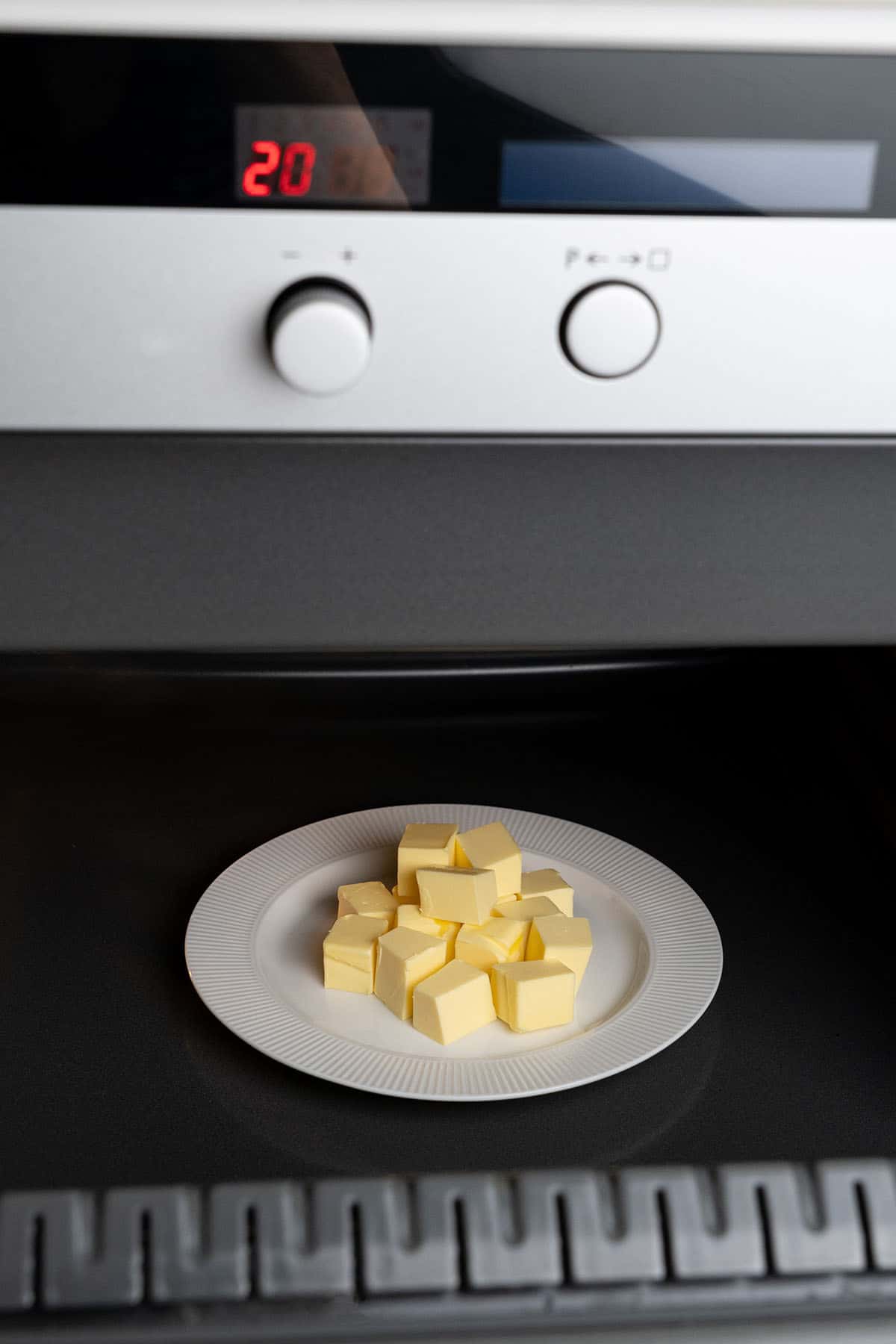
This method teaches you how to soften butter quickly with a microwave, but the butter is never actually heated by the microwave itself. Instead, what happens is that a steamy environment is created inside the microwave which then perfectly brings the cold butter to room temperature in a snap!
- How to: To start, cut the cold butter into chunks and put them in a bowl. Next, fill a separate microwave-safe bowl with water and heat it at high power in the microwave for about 3 minutes or until the water begins boiling. Now, remove the bowl with water from the microwave, put the cubed butter into the microwave, and immediately close the door. Then let the butter sit in the steamy microwave for about 8 to 10 minutes with the door closed.
- Time: 8 to 10 minutes
- Pros: This method is a great way to soften butter quickly in the microwave without the risk of melting it.
- Cons: You have to own a microwave and it takes a few extra minutes to create a steamy environment inside of it. Again, make sure you do not burn yourself.
6. Microwave it

This last method uses the microwave to bring the butter to room temperature, so if you’ve ever wondered can I soften butter in the microwave? The answer is yes! However, you need to do it very carefully and when using the microwave it’s extra important to learn how to soften butter without melting it.
- How to: Place a stick of cold butter on a plate. Next, microwave it at 30% power for 5 seconds. Now, flip the butter over and microwave it for another 5 seconds at 30% power. Then continue heating the butter for 5 seconds on low and flip it over until it comes to room temperature. You can also use the defrost setting for this method. Alternatively, you can use the defrost function and cubed butter chunks, that is my preference as it is very quick.
- Time: 15 to 30 seconds
- Pros: Softens butter quickly with very little effort.
- Cons: You need a microwave and there is a much greater chance of unintentionally melting the butter. Also, how long to microwave butter to soften is different for every microwave so you have to be very careful monitoring it and not walk away.
Can You leave the butter out overnight to soften?
Now that we’ve covered how to soften butter quickly, you may be wondering, can butter soften overnight? The USDA says that butter can be kept at room temperature for up to 2 days before it begins to go rancid. So yes, it’s possible, but I don’t recommend that you leave the butter out overnight if you have a warm house because it’s also possible for it to become too soft for recipes.
Expert tips for softening butter
- For the best results, use butter with a minimum of 82% fat content.
- Room-temperature butter should still be cool to the touch and not melted at all.
- If your softened butter is super creamy it’s probably too soft. When you press room temperature butter with your finger it should just form a small indentation but still hold its shape.
- Use an instant-read digital thermometer to ensure that your room temperature butter is between 18°-20°C / 65°-68°F before using softened butter in a recipe.
- If a recipe calls for room-temperature butter the eggs in the recipe should also be at room temperature so that the batter or dough emulsifies properly.
- Never use cold butter in baking recipes that specifically call for room-temperature butter. If you do, your baked goods will not turn out well.
- Always soften butter in the microwave on low power in increments of 5 seconds. The microwave method should only be used as a last resort when you are in a pinch.
Softening butter FAQs
The best way to bring butter to room temperature is just to set it on your kitchen counter about 1 to 2 hours before you begin a recipe.
Among all the options probably microwaving at low temperature is the quickest, however, it is a risky option that might result in overheating the butter, which is not the ideal texture for baking. Use the lowest setting on your microwave and check on the butter every few seconds.
Covering it with a hot bowl is the best hack, in my view. The radiating heat warms the cold butter up just enough for it to reach room temperature in just a matter of minutes.
Recipes using softened butter
More Baking Guides
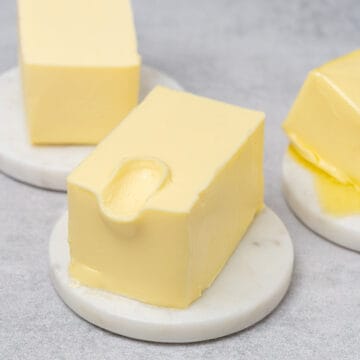
How to soften butter quickly
- 113 g Unsalted butter
Instructions
1. Cube the butter
- Cut the cold stick of butter into cubes.
- Let it sit for about 15 minutes to come to room temperature. Smaller chunks will soften more quickly than bigger chunks.
2. Grate the butter
- Shred the butter with a box grater like you would grate cheese.
- Give the butter 5 to 7 minutes to come to room temperature.
3. Pound the butter
- Put the cold butter into a plastic ziplock bag or between 2 pieces of parchment paper.
- Flatten it out by either pounding it with a rolling pin or meat mallet. You can also roll back and forth over it with the rolling pin.
- Allow the butter to sit for 5 to 10 minutes to get soft.
4. Cover it with a warm bowl
- Cut the butter into chunks and put them on a plate.
- Fill a glass bowl with water and heat it in the microwave for 2 to 3 minutes on high power or until the water is boiling. If you don't have a microwave you can also pour boiling water into a glass bowl and let it sit for 30 seconds.
- Dump the water out into the sink and place the empty bowl over the cubed butter.
- Leave the warm bowl over the butter for about 5 minutes and the butter will soften to room temperature.
5. Put it in a humid microwave
- Cut the cold butter into cubes and place them in a bowl.
- Fill a separate microwave safe bowl with water and heat it at high power in the microwave for about 3 minutes or until the water begins boiling.
- Remove the bowl with water, put the bowl with cold butter into the microwave, and shut the door.
- Let the butter sit in the humid microwave for 8 to 10 minutes.
6. Microwave it
- Put the cold stick butter on a plate.
- Microwave the butter at 30% power for 5 seconds, flip it over, and then microwave it for another 5 seconds. Then continue heating the butter for 5 seconds at 30% power and flipping it over until it comes to room temperature.
- This process typically takes 15 to 30 seconds in total depending on the power of your microwave. It is better to go slow and steady, than accidentally melting your butter.






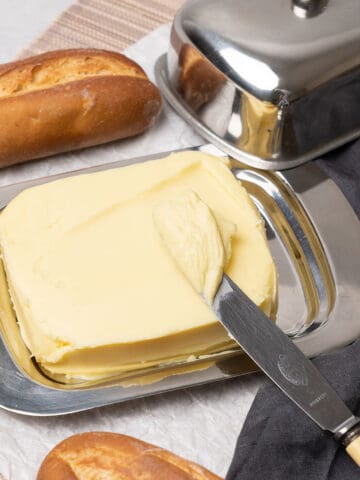
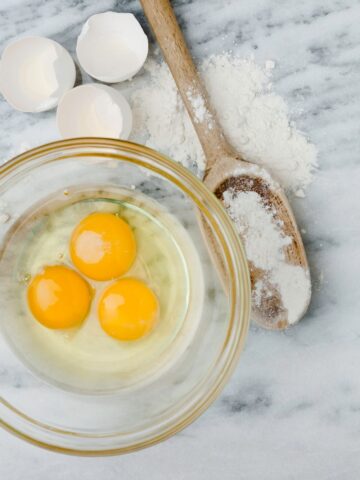
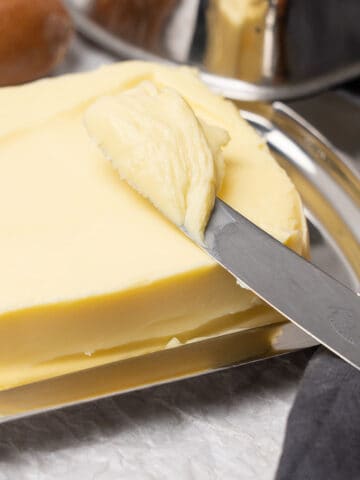

Leave a Reply